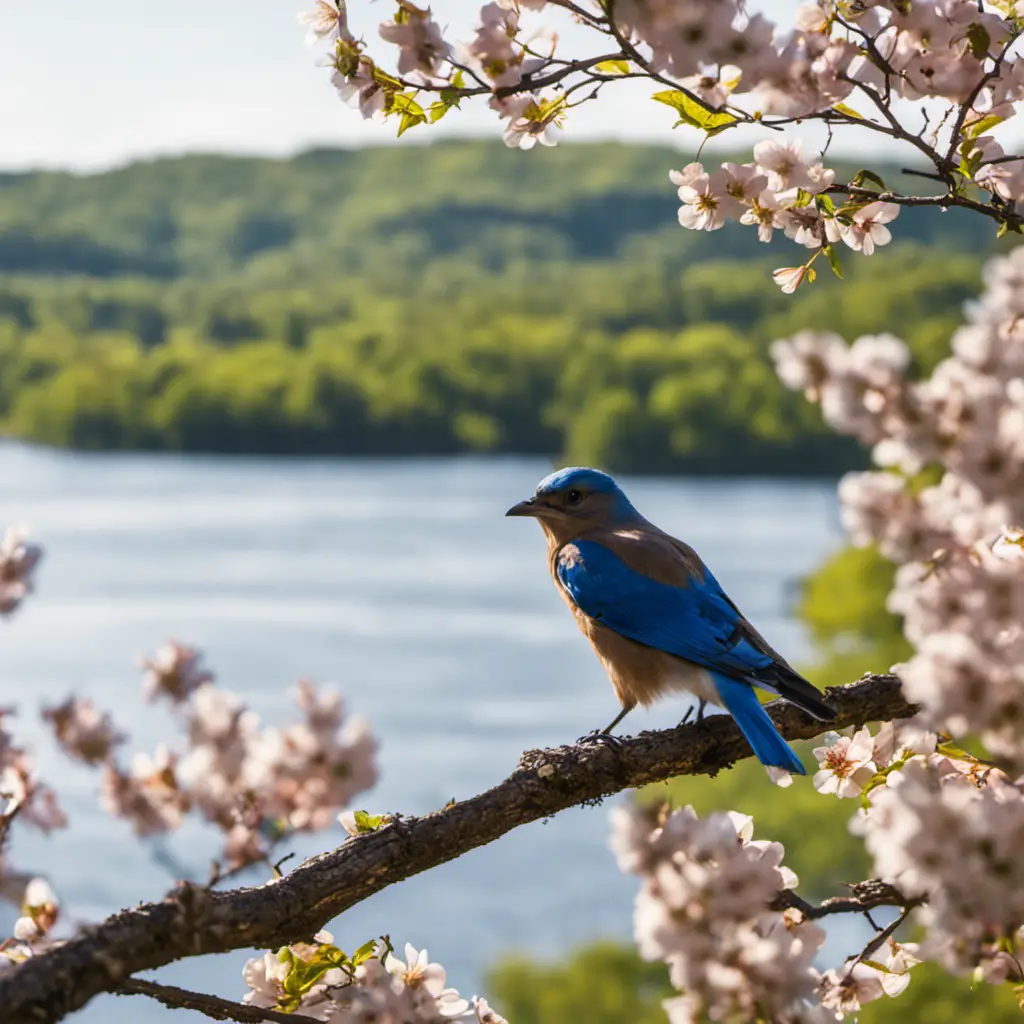Did you know that Mississippi is home to more than 300 species of birds? From the American Goldfinch to the Wood Duck, there are a variety of beautiful and interesting birds that can be found in the Magnolia State. In this blog post, we will take a look at some of the most common birds of Mississippi. Whether you’re a bird enthusiast or just looking to learn more about our feathered friends, read on for a breakdown of some of the most common birds in Mississippi!
We’ll give you key facts and images of the most frequent birds in Mississippi. Only reliable sources were used, and an Ornithologist verified the data.
Most Common Backyard Birds in Mississippi:
- Northern Cardinal (56% frequency)
- Blue Jay (48%)
- Northern Mockingbird (48%)
- Mourning Dove (47%)
- Carolina Wren (41%)
Facts about Birds in Mississippi:
State bird of Mississippi: Northern Mockingbird
The biggest bird in Mississippi: American Bald Eagle
The smallest bird in Mississippi: Carolina Chickadee
The heaviest bird in Mississippi: Wild Turkey
The fastest bird in Mississippi: Peregrine Falcon
Mississippi National parks with the most bird species: Gulf Islands National Seashore, Natchez Trace Parkway
Northern Cardinal
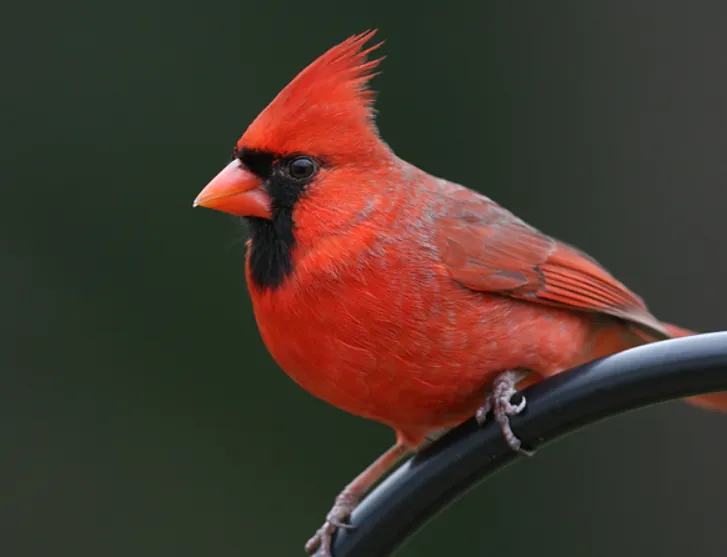
The Northern Cardinal is a medium-sized songbird with a robust body and a bright redhead.
Cardinals are one of the most common birds in North America and can be found in almost any habitat from dense forests to open fields. These birds are very social and typically live in pairs or small groups.
Cardinals are omnivorous, eating a variety of seeds (like black oil sunflower seeds), fruits, and insects. Cardinals are year-round residents in most of the southern United States and are a common sight at bird feeders. These beautiful birds are a welcome addition to any backyard!
The Northern Cardinal is a medium-sized songbird with a robust body and a bright redhead. The male cardinal is particularly striking, with a red body and black wings.
The female cardinal is more subdued in color, with a grayish-brown body and reddish wings. Cardinals are one of the most common birds in North America and can be found in almost any habitat from dense forests to open fields.
These birds are very social and typically live in pairs or small groups. Cardinals are monogamous and mate for life. The male cardinal is very protective of his territory and will sing loudly to ward off intruders.
Cardinals are also known for their distinctive “call”, a sharp, repetitive sound that is often used to communicate with other birds.

Blue Jay
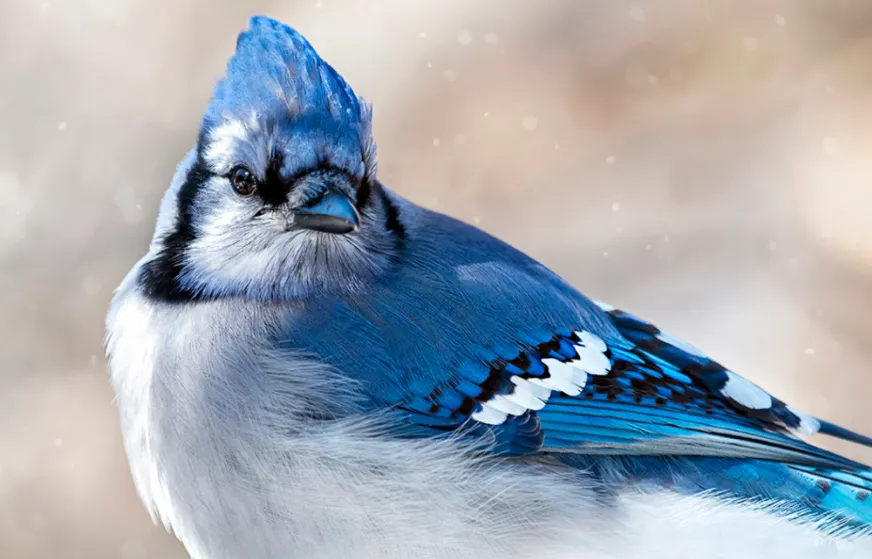
Blue Jay Characteristics:
- Striking blue plumage
- Large songbird
- Can mimic human speech
- Mate for life
- Form small flocks composed of family members
- Nest in trees
- Eat insects, nuts, and fruits
- Most commonly found in wooded areas near rivers or lakes
Blue Jay Size:
- Length: 11-12 inches
- Wingspan: 16-18 inches
- Weight: about four ounces
Blue Jay Appearance:
The blue jay has a blue body with a white chest and underparts. It has a black neck and head with a crest on top. Its bill is black and its legs are gray.
Blue Jay Behavior:
Blue jays are very social birds and they often flock with other blue jays. They are known for their intelligence, and they can be taught to mimic human speech. These birds are also aggressive when it comes to defending their territory or food.
Blue Jays typically mate for life and form strong family bonds. They are often territorial and will attack other birds or animals that enter their space.
Blue Jay Habitat:
Blue jays live in forests, woodlands, and parks throughout North America. In Mississippi, they are most commonly found in wooded areas near rivers or lakes.
These birds need a lot of trees to build their nests, and they prefer a mixture of deciduous and coniferous trees. Blue Jays are also attracted to feeders, and they will eat a variety of foods including insects, nuts, and fruits.
Blue Jay Diet:
In the wild, blue jays primarily eat insects, nuts, and fruits. They will also eat small birds or eggs if they can find them.
These birds are attracted to feeders, and they will eat a variety of foods including sunflower seeds, peanuts, and suet. Blue jays typically eat two to three times a day.

Northern Mockingbird

The Northern Mockingbird is a medium-sized songbird with gray plumage and white underparts. It has a black tail and wings, and its bill is long and curved. The male mockingbird is particularly striking, with a gray body and white wing bars.
The female mockingbird is more subdued in color, with a grayish-brown body and white wing bars. Mockingbirds are one of the most common birds in North America and can be found in almost any habitat from dense forests to open fields.
These birds are very social and typically live in pairs or small groups. Mockingbirds are monogamous and mate for life. The male mockingbird is very protective of his territory and will sing loudly to ward off intruders.
Mockingbirds are also known for their distinctive “call”, a sharp, repetitive sound that is often used to communicate with other birds.

Mourning Dove
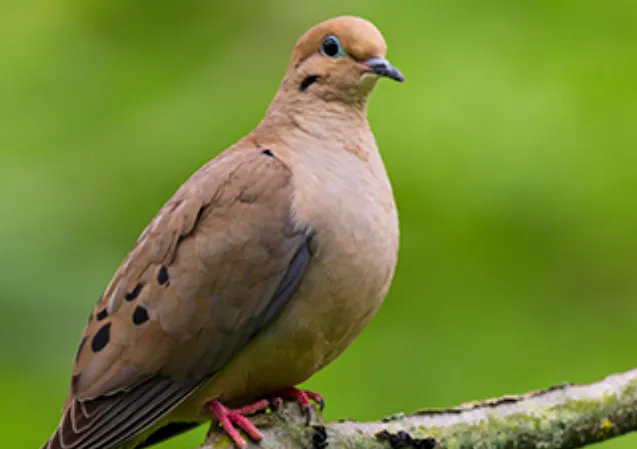
The Mourning Dove is a small, slender bird with long tails and wings. They have muted colors of gray and brown and are often mistaken for other doves in the area. Mourning Doves are common throughout North America and can be found in most habitats including urban areas, forests, and open fields.
These birds are ground feeders and eat a variety of seeds and fruits. Mourning Doves are also known for their mournful cooing sound which is often heard in the early morning or late evening hours.
Mourning Doves are relatively small birds, measuring only about 12 inches in length. They have long, pointed tails and wings that help them glide through the air.
These birds are mostly gray and brown in color with some white on their wings. Mourning Doves are very common throughout North America and can be found in most habitats.
Mourning Doves are ground feeders and eat a variety of seeds and fruits. In urban areas, they will often eat birdseed from bird feeders. In forests and open fields, they will feed on the ground or in trees.
Mourning Doves are also known for their mournful cooing sound which is often heard in the early morning or late evening hours. This cooing can be used to communicate with other doves or to warn predators of danger.
Mourning Doves live in a variety of habitats including urban areas, forests, and open fields. These birds are adaptable and can live in most North American habitats.
Mourning Doves are social birds and often live in pairs or small flocks. These birds mate for life and often build their nests together. Mourning Doves typically lay two eggs per clutch and have several broods per year.

Carolina Wren

The Carolina Wren is a small songbird with a body length of around five inches. They are brown and white in color with a rusty-brown tail. Males and females look similar, but the males tend to be slightly larger than the females.
These birds are found in woodlands, forests, and gardens across the southeastern United States.
Carolina Wrens are very active and territorial and can be seen perched on tree branches or hopping along the ground in search of food. They eat a variety of insects, spiders, seeds, and fruit.
Carolina Wrens are known for their loud and melodic songs, which they sing year-round. They are also one of the few bird species that will build their nests in man-made structures, such as houses, sheds, and porches.

Eastern Bluebird

The Eastern Bluebird is a small, stocky bird with a length of about eight inches and a wingspan of about twelve inches.
The plumage of the male is bright blue above and pale below, while the female is duller overall. Both sexes have red eyes and a thin black bill. Eastern Bluebirds are cavity nesters, using tree cavities or man-made nest boxes.
They are typically found in open woodlands, edges, and fields. The diet of the Eastern Bluebird consists mostly of insects, although they will also consume berries and other fruits.
During the breeding season, Eastern Bluebirds form monogamous pairs and lay a clutch of four to six eggs. The eggs are incubated for about two weeks, and the young birds fledge after another two to three weeks.
Eastern Bluebirds are very territorial and will aggressively defend their territory against other bluebirds and other birds of prey.
The Eastern Bluebird is a common sight in Mississippi, where it can be found in open woodlands, edges, and fields. They are a beautiful sight to behold and make for fascinating study.

Eastern Towhee

The Eastern Towhee is a bird in the sparrow family. It is about six and a half inches long with a black back, wings, and tail. The underparts are white with large black spots on the sides.
There is an orange-red patch on the chest. The bill is dark and slightly curved downward. The legs are pink.
The Eastern Towhee is found in woods, especially near the edges. It hops on the ground to look for food such as insects, spiders, berries, and seeds. The bird also eats some fruits and vegetables. In the winter, it may visit bird feeders.
The Eastern Towhee nests in trees or shrubs. The female builds the nest and lays three to five eggs in it. Both parents care for the young birds.
The Eastern Towhee is found in the eastern United States, including parts of Mississippi. It is also found in southern Canada.

Red-winged Blackbird

The red-winged blackbird (Agelaius phoeniceus) is a medium-sized bird in the family Icteridae. It is sexually dimorphic, with the male being all black with red shoulder patches, while the female is dark brownish.
The red-winged blackbird is found in open wetlands and marshes across North America. It is a colonial nester, meaning it builds its nest in colonies with other red-winged blackbirds. The diet of the red-winged blackbird consists of insects, spiders, and snails.
The red-winged blackbird is about 16 cm (0.63 in) long and has a wingspan of 30 cm (12 in). The male red-winged blackbird weighs 31-40 g (0.11-0.14 oz), while the female weighs 21-32 g (0.07-0.01 oz).
The adult male red-winged blackbird is all black with red shoulder patches, while the female is dark brownish. Juveniles have mottled brown plumage.
The red-winged blackbird is found in open wetlands and marshes across North America. It breeds from Alaska and Canada to Mexico and the Caribbean. The red-winged blackbird is a permanent resident in some parts of its range, while other populations are migratory.
The diet of the red-winged blackbird consists of insects, spiders, and snails. It forages on the ground or in trees and bushes. The red-winged blackbird is an important agricultural pest in some parts of its range, as it feeds on crops such as rice, corn, and sorghum.
The red-winged blackbird is a colonial nester, meaning it builds its nest in colonies with other red-winged blackbirds. The female builds the nest out of twigs, grass, leaves, and moss. The nest is usually built in a tree or bush near water.

Yellow-rumped Warbler

The yellow-rumped warbler is a small songbird that is found in North America. These birds are around five and a half inches long and have a wingspan of nine inches.
They are pale olive green on the upper parts of their body, with yellow patches on their rumps and sides. The males have black caps and the females have grayish-brown caps.
The yellow-rumped warbler is a non-migratory bird, which means that it stays in the same area all year long.
These birds are found in woods and forests, especially near streams or other bodies of water. They eat insects, spiders, and other small invertebrates.
They also eat seeds and fruit. Yellow-rumped warblers are very active birds and are known for their fast movements and aerial acrobatics.
They are a common sight in backyards and parks during the spring and summer months.
Yellow-rumped warblers are beautiful birds to watch, and they are fun to listen to as they sing their cheerful songs. They are great birds to see in the wild and are sure to brighten up any day.

Carolina Chickadee
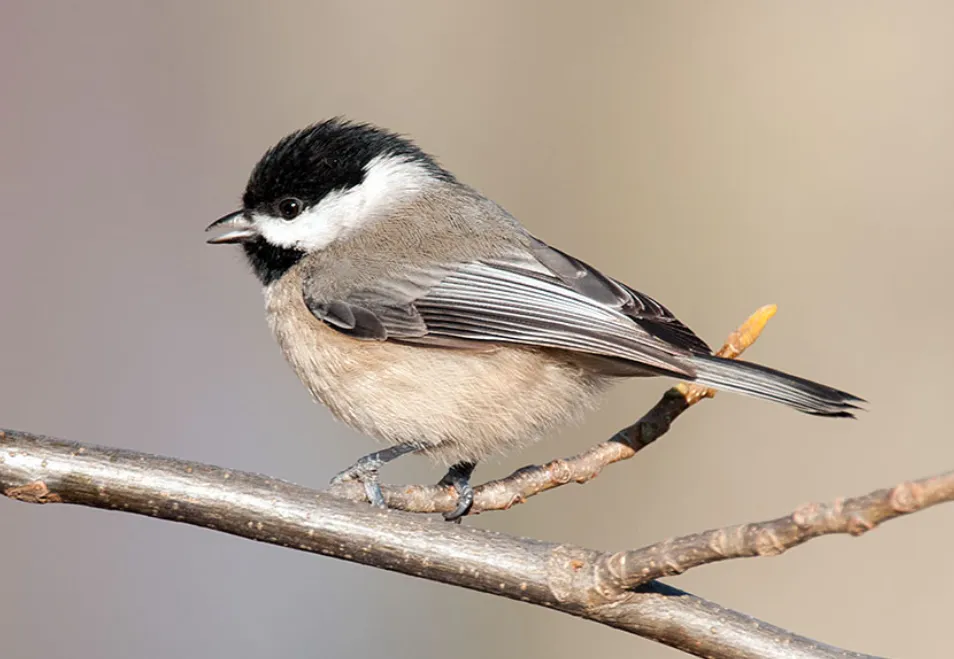
The Carolina Chickadee is a small, sprightly bird with a black cap and bib, gray back, wings and tail, and white sides and belly. They are one of the few birds that can survive cold winters by fluffing up their feathers to create insulation. These birds are acrobatic fliers and are often seen hopping and zipping about in the trees. Carolina Chickadees are omnivorous, feeding on insects, seeds, berries, and other plant matter.
They prefer to live in deciduous or mixed forests but can also be found in parks, gardens, and even residential areas.
These cheerful birds are known for their song, which sounds like “fee-bee fee-bay”. The Carolina Chickadee is the state bird of both North and South Carolina.
If you’re lucky enough to spot one of these little guys, you’re sure to be charmed by their playful nature and cheerful song.

Barn Swallows

Barn Swallows are small songbirds with long, pointed wings and a deeply forked tail. They are usually pale blue-gray above with a rusty throat and breast.
Some Barn Swallows have a brownish wash on their back and wings. Juveniles are similar to adults but duller in color.
These birds measure about five inches in length and have a wingspan of about 12 inches.
Barn Swallows are very aerial, spending much of their time flying or perched on an exposed perch such as a wire or the edge of a building.
They catch most of their prey while flying, swooping down to snatch insects out of the air. They also eat spiders, small reptiles, and amphibians.
Barn Swallows are found in open country near water, such as fields, marshes, lake edges, and seashores.
They build their nests on the underside of a roof eave or under an overhang on a building. The nest is made of mud pellets and lined with grasses and feathers.
These birds are social, often nesting in colonies of hundreds or even thousands of pairs. Barn Swallows are strong flyers and migrate long distances. They winter in South America and return to the United States and Canada to breed in the spring.

White-throated Sparrow
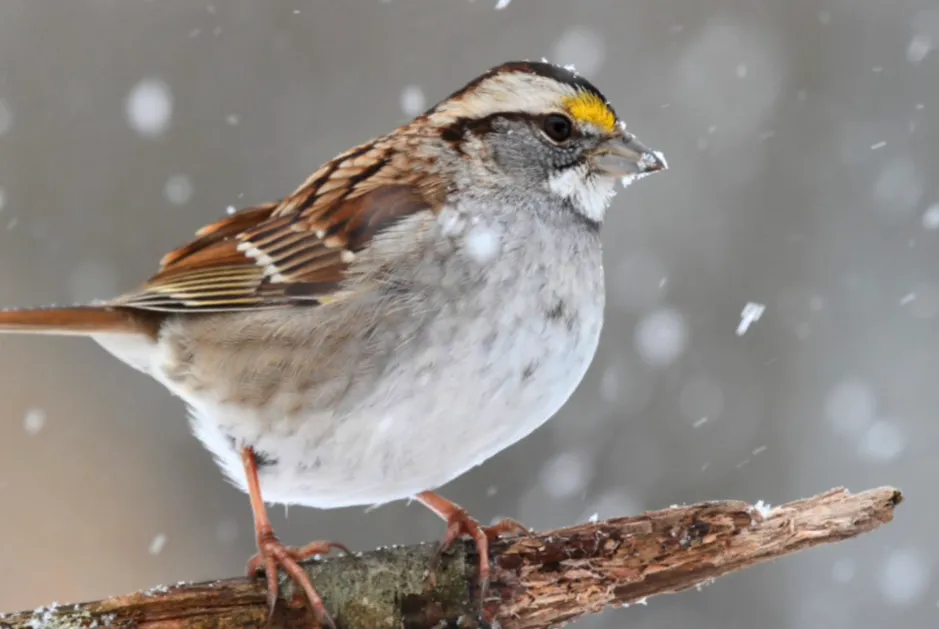
The White-throated Sparrow is a sparrow that is common in North America. It has a white throat and breast with black streaks on its back and sides.
The bird is about six inches long and weighs about one ounce. It feeds on insects, seeds, and berries. The White-throated Sparrow nests in trees or shrubs near the ground. It is found in woods, fields, and gardens.
The White-throated Sparrow is a sparrow that is common in North America. It has a white throat and breast with black streaks on its back and sides. The bird is about six inches long and weighs about one ounce.
It feeds on insects, seeds, and berries. The White-throated Sparrow nests in trees or shrubs near the ground.

Related post: Most Common Birds of North Dakota
American Goldfinch
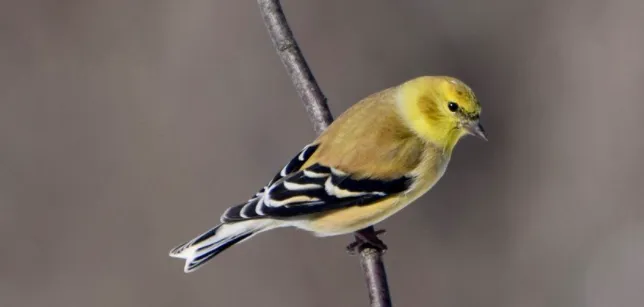
The American Goldfinch is a small, colorful songbird. Males have black wings with white wing bars and a yellow body. Females are similar but usually have a greenish hue to their wings.
These birds are often seen in flocks feeding on seeds. They will also visit bird feeders. American Goldfinches breed in open woodlands and nest in trees. Their diet consists mostly of seeds.
American Goldfinches are common throughout the United States.
American Goldfinches are about six inches long and have a wingspan of about nine inches. They weigh between 0.25 and 0.35 ounces. These birds can be identified by their black wings with white bars, yellow bodies, and reddish-brown heads.
American Goldfinches are usually seen in flocks and can be very active, constantly moving around while feeding. They breed in open woodlands and nest in trees, either singly or in colonies.
Their diet consists mostly of seeds, but they will also eat insects, berries, and nectar. American Goldfinches are common throughout the United States.

Tufted Titmouse
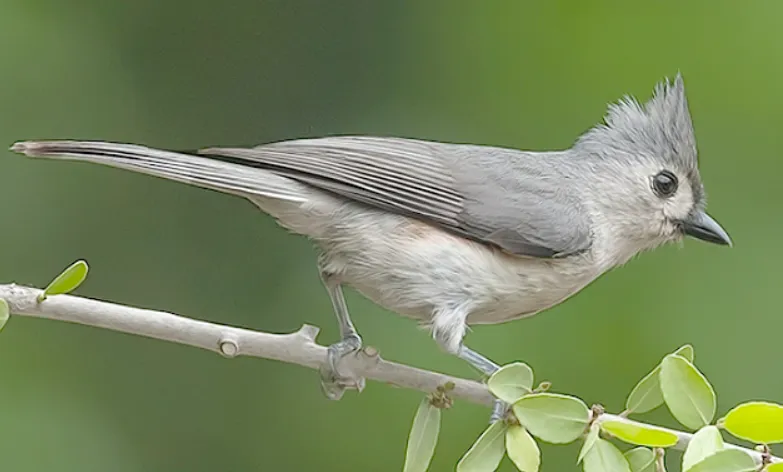
The Tufted Titmouse is a small songbird that is commonly found in Mississippi. They have a characteristic crest of feathers on their head, and they are mostly gray in color.
Tufted Titmice are very active birds, and they are known for their playful behavior. They live in wooded areas near open spaces, and they eat a variety of foods, including insects, seeds, and fruit.
Tufted Titmice are common in backyards and other urban areas, and they are a popular bird to watch.
Tufted Titmice are about six inches long, and they have a wingspan of about eleven inches. They are small birds, but they are very sturdy and well-built. The crest of feathers on their head can be raised or lowered depending on the bird’s mood.
Tufted Titmice have dark eyes and a black stripe on their upper beak. Their legs and feet are gray, and they have four toes on each foot.
Tufted Titmice are very active birds, and they are constantly moving around. They are known for their playful behavior, and they often play with each other or with other animals.
Tufted Titmice are also very curious birds, and they will often investigate their surroundings. They are not afraid of humans, and they will often approach people who are close to their territory.

Indigo Bunting
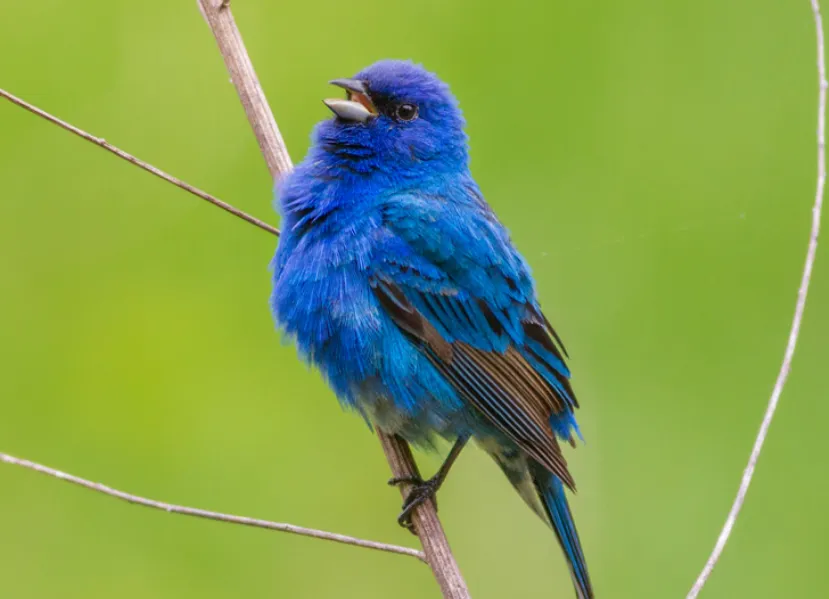
The Indigo Bunting is a small songbird that can be found in Mississippi. They have characteristic blue feathers and are about six inches long. Indigo Buntings are very active birds and love to sing and flit around in the trees.
They eat insects and seeds. Indigo Buntings prefer to live in open areas near forest edges or in meadows. In
Mississippi, you can find them in the spring and summer months.
If you’re lucky enough to see an Indigo Bunting, you’ll be charmed by their blue plumage and cheerful song. These small birds are a delight to watch as they flit about in the trees.
Though they’re mostly found in wooded areas near the edge of forests or in meadows, during the spring and summer months you can find them in Mississippi.

American Robin
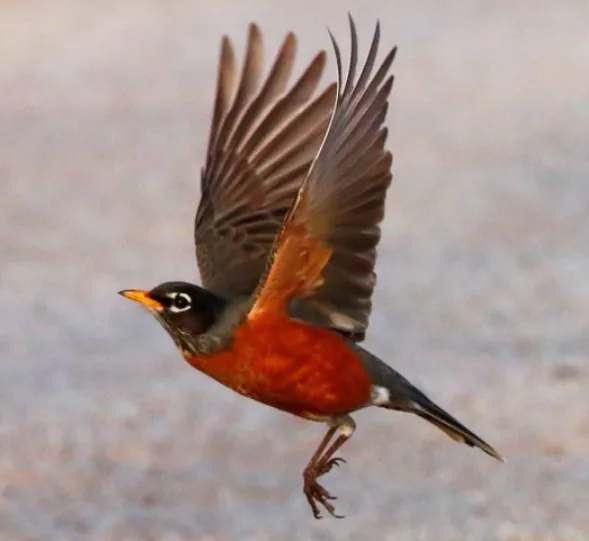
The American Robin is a medium-sized songbird that is found throughout North America. They are one of the most common birds in Mississippi and can be identified by their orange breasts and whitethroats. American Robins are known for their cheerful songs, which they sing from high perches in trees.
American Robins are typically about 12 inches long and have a wingspan of about 20 inches. They are generally gray or brown in color, with some light markings on their chest. Their bills are black, and their eyes are bright yellow.
American Robins are active birds that spend a lot of time foraging for food. They eat insects, berries, and other small fruits.
During the winter months, they will also eat earthworms and other small invertebrates.
American Robins typically nest in trees, often using abandoned nests of other birds. They will also build their own nests out of twigs, grasses, and leaves.
Females lay between three and five eggs per clutch, and incubate them for about two weeks. The young birds will stay with their parents for another four to six weeks.

Red-bellied Woodpecker
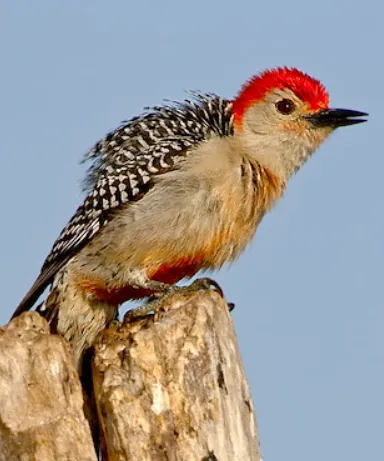
The red-bellied woodpecker is a small to medium-sized woodpecker with distinctive red coloring on its belly. It is found in wooded areas across the eastern United States, from Maine to Mississippi.
This bird gets its name from the circular patch of red feathers on its lower belly, which is visible when the bird is in flight. The red-bellied woodpecker is a shy bird that is rarely seen in the open. It prefers to stay hidden in the trees, where it can find food and shelter.
The red-bellied woodpecker is about the same size as a robin. It has a black back and wings, with white stripes down its sides. The head, nape, and throat are also black. The bird’s most distinguishing feature is the bright red patch on its belly. Male and female woodpeckers look alike.
The red-bellied woodpecker feeds mainly on insects, but it will also eat fruit, nuts, and seeds. It uses its long, sharp beak to drill holes in tree bark to find food. The woodpecker also uses its beak to make nest holes. These nest holes are usually about two inches wide and six inches deep.
The red-bellied woodpecker is a shy bird that is not often seen in the open. It prefers to stay hidden in the trees, where it can find food and shelter. This bird is found in wooded areas across the eastern United States, from Maine to Mississippi.
The red-bellied woodpecker gets its name from the circular patch of red feathers on its lower belly, which is visible when the bird is in flight. Male and female woodpeckers look alike.

American Crow Bird
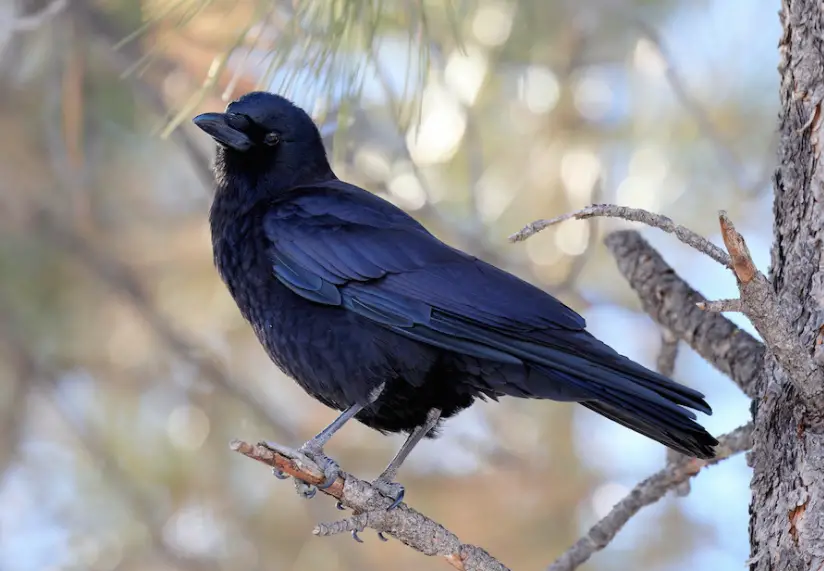
The American Crow Bird is a species of bird that is native to the Mississippi area. These birds are known for their large size and their loud, raucous calls. Crowd Birds are also known for their aggressive behavior towards other birds and animals.
These birds typically live in wooded areas near rivers or wetlands. American Crow Birds are omnivorous, and their diet consists of insects, small mammals, reptiles, and fruits.
These birds are usually about 18 inches in length and have a wingspan of about 36 inches. They are generally a dark brown birds, with some white markings on their chest.
The American Crow Bird is a fascinating bird to watch, and they are sure to make an impression wherever they are seen.

Eastern Phoebe
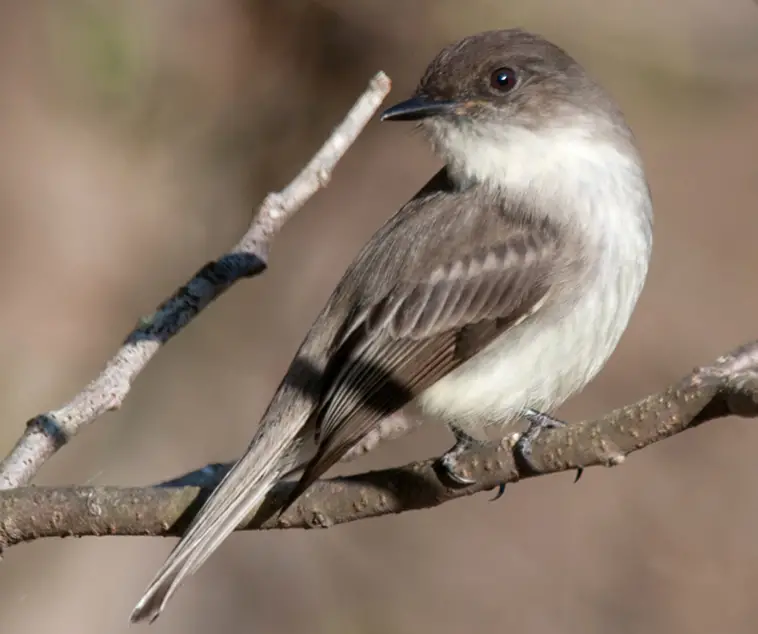
Eastern Phoebe’s are brown with a slightly darker head and they have a white eye-ring. They are around six inches long and have a wingspan of about ten inches. Eastern Phoebe’s eat insects, which they catch while in flight.
They live in open areas near water, such as marshes, fields, and parks. In the winter, they can be found in Mexico and along the Gulf Coast. Phoebe’s are interesting birds because they build their nests using mud.
The female Eastern Phoebe will use her saliva to help form the mud into a cup shape. She will then line the nest with hair, feathers, and other soft materials. Eastern Phoebe’s typically have two broods per year.
The first brood will be born in May or June and the second brood will be born in July or August. Phoebe’s are very social birds and they often nest in colonies.

Song Sparrow
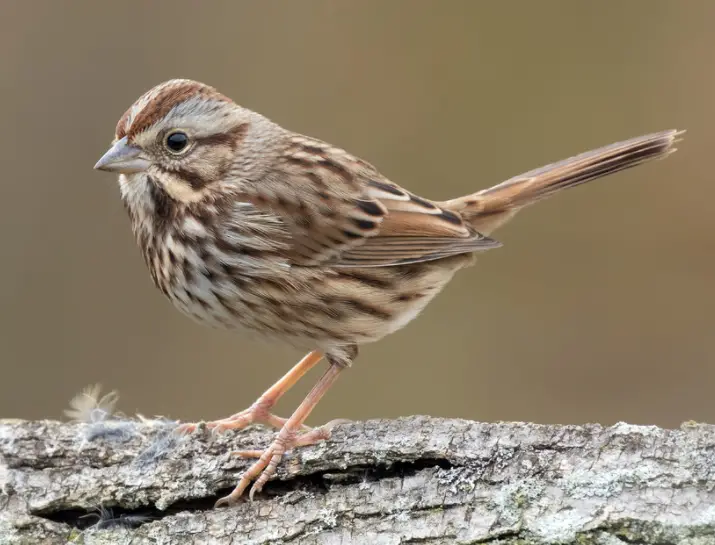
Song Sparrows are one of the most commonly found birds in North America. They can be found in a variety of habitats, including fields, forests, and wetlands.
Song Sparrows are typically about six inches long and have brown or gray feathers on their back with lighter colors on their chest and belly. They have a white stripe above each eye and a dark spot on the breast.
Song Sparrows are known for their beautiful song, which is why they get their name. They use their song to communicate with other birds and to attract mates.
Song Sparrows eat a variety of things, including insects, seeds, berries, and small animals. They usually forage on the ground, but they can also be found in trees.
Song Sparrows are very adaptable and can survive in a variety of habitats. They are common in both rural and urban areas.
Song Sparrows are interesting birds to watch. They are active and playful and often chase each other around. They are also known for their intelligence; they have been known to figure out how to open doors and windows in order to get into buildings.

House Finch
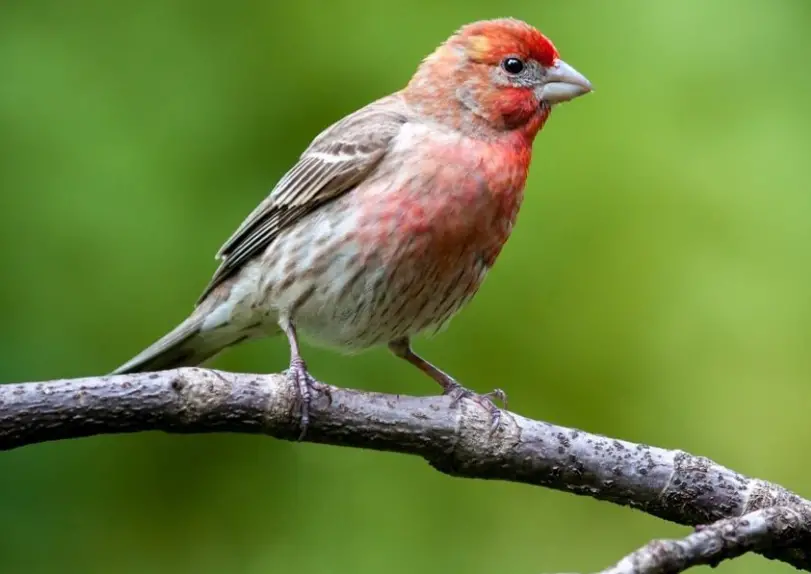
The house finch is a small bird, measuring about five to six inches in length. Its body is reddish-brown in color with streaked markings on its breast and back. The male house finch has brighter red plumage than the female.
These birds are often seen perching on rooftops or power lines. They build their nests in trees or on buildings. House finches eat a variety of seeds and fruits. In the wild, they are known to eat thistle and sunflower seeds.
They will also consume crushed insects for protein. House finches are not migratory birds but may move around within their range in search of food or suitable habitat. These birds are found throughout the continental United States and southern Canada.
In Mississippi, house finches are commonly seen in urban and suburban areas. They are also found in woodlands, fields, and gardens. House finches typically live for about four to five years in the wild.
However, captive birds have been known to live for up to 15 years. These birds make a variety of vocalizations, including chirping, twittering, and warbling. The house finch is a popular bird for cage birds because of its pleasant song.
However, it is illegal to capture and sell wild house finches in the United States. If you are interested in keeping a house finch as a pet, you must obtain a bird from a licensed breeder.

Downy Woodpecker
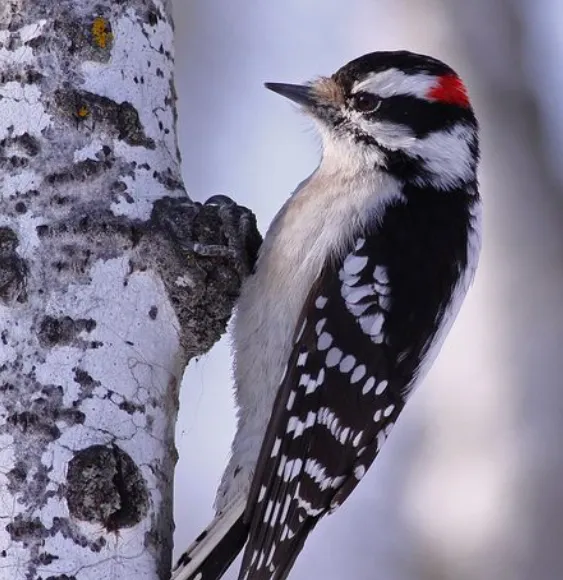
The Downy Woodpecker is the smallest woodpecker in North America. They are about six inches long and have a wingspan of about 12 inches. They weigh between one and two ounces.
The Downy Woodpecker has a black cap and back, white cheeks, and a gray body. They have a short bill and a long tail. The male and female look alike.
The Downy Woodpecker is found in woodlands, parks, and gardens. They nest in tree cavities. The Downy Woodpecker feeds on insects and spiders. They eat ants, beetles, flies, grasshoppers, and caterpillars. They also eat berries, nuts, and seeds.
The Downy Woodpecker is a year-round resident in Mississippi. They are most active during the day. During the winter, they often feed on suet at bird feeders.
The Downy Woodpecker is an important part of the ecosystem. They help control insect populations.

Common Mississippi’s Fall and Winter Birds:
- Song Sparrow
- House Finch
- Downy Woodpecker
- Northern Cardinal
- American Goldfinch
- Pine Siskin
- Tufted Titmouse
- White-breasted Nuthatch
- Black capped Chickadee
List of most Common Mississippi backyard birds of spring, summer, and early fall:
- Song Sparrow
- House Finch
- Downy Woodpecker
- Northern Cardinal
- American Goldfinch
- Pine Siskin
- Tufted Titmouse
- White-breasted Nuthatch
- Black-capped Chickadee
List of most common small birds in Mississippi:
- House Finch
- Downy Woodpecker
- American Goldfinch
- Tufted Titmouse
- White-breasted Nuthatch
- Black-capped Chickadee
Tips for bird watching:
- Bring a pair of binoculars to get a closer look at birds.
- Stay quiet and still when bird watching. This will help you avoid scaring the birds away.
- Be patient; it may take some time to see any birds.
- Know which birds are common in your area and which ones are rare. This will help you better identify birds.
- Record the different types of birds you see in a bird journal. This will help you keep track of what kinds of birds you have seen.
- Attract birds to your backyard by putting up a bird feeder and providing fresh water.
- Join a local bird watching group or visit
How many species of birds are in Mississippi?
There are approximately 400 species of birds in Mississippi. This number includes both permanent residents and migrants.
What is the rarest bird in Mississippi?
There is no definitive answer to this question as different birders may have different opinions. However, some of the rarer birds that have been spotted in Mississippi include the Yellow-throated Warbler, Prothonotary Warbler, and Painted Bunting.

An avid ornithologist, zoologist and biologist with an unwavering passion for birds and wild animals.
Dr. Wilson’s journey in ornithology began in childhood and led him to obtain a Ph.D. in Ornithology from the prestigious Avian Research Institute. He has worked closely with renowned experts in the field and conducted extensive research and field studies globally.


